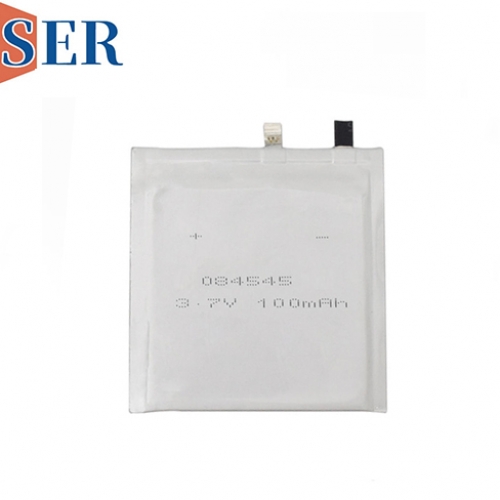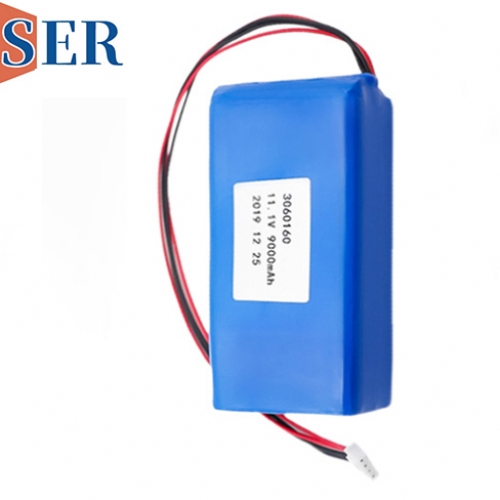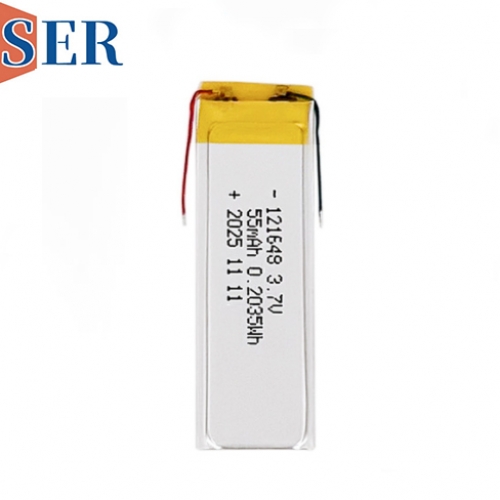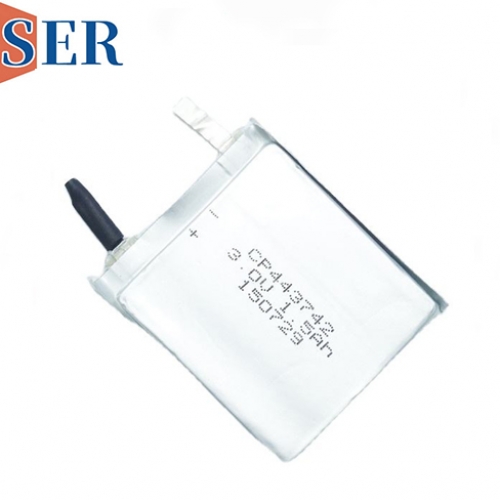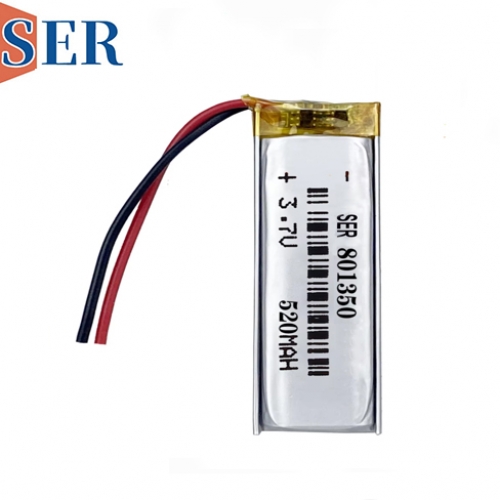Knowledge and Applications of Ultrathin Batteries: Focus on LiMnO₂ ultrathin battery and ultra-thin LiPo battery
Knowledge and Applications of Ultrathin Batteries: Focus on LiMnO₂ ultrathin battery and ultra-thin LiPo battery
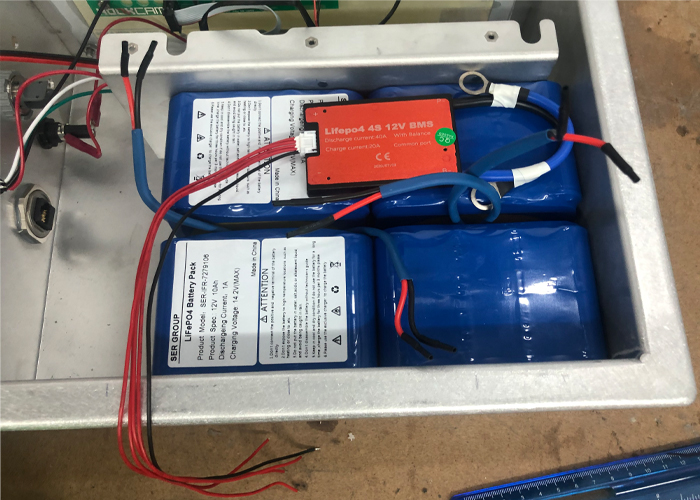
Abstract
Ultra-thin batteries have emerged as a revolutionary power source in the modern era, catering to the increasing demand for compact, lightweight, and high-performance energy storage solutions. This article delves into the various types of ultrathin batteries, including LiMnO₂ ultra-thin battery, ultra-thin LiPo battery ( ultra-thin Lithium Polymer battery), and 3.7V variants, exploring their characteristics, manufacturing processes, advantages, challenges, and diverse applications. By examining these aspects, we aim to provide a comprehensive understanding of the current state and future prospects of ultrathin battery technology.
1. Introduction
In today's fast-paced technological landscape, where electronic devices are becoming smaller, more portable, and increasingly sophisticated, the need for efficient and compact power sources has never been greater. Ultrathin batteries have risen to the occasion, offering a viable solution to the energy storage requirements of a wide range of applications, from wearable electronics and medical devices to smart cards and Internet of Things (IoT) sensors.
The development of ultrathin batteries has been driven by advancements in materials science, nanotechnology, and battery manufacturing techniques. These batteries are characterized by their extremely thin form factors, typically ranging from a few micrometers to a few millimeters in thickness, while still providing sufficient energy density and power output to meet the demands of modern electronic systems.
2. Types of Ultrathin Batteries
2.1 Ultrathin LiMnO₂ Batteries
Lithium Manganese Dioxide (LiMnO₂) batteries are a type of primary (non-rechargeable) battery that has gained popularity in ultrathin applications due to their high energy density, stable voltage output, and relatively low cost. The cathode material in LiMnO₂ batteries is lithium manganese dioxide, while the anode is typically made of lithium metal.
2.1.1 Characteristics
High Energy Density: LiMnO₂ batteries offer a high energy density, which means they can store a significant amount of energy in a small volume. This makes them ideal for applications where space is limited, such as in smart cards, RFID tags, and miniature medical devices.
Stable Voltage Output: These batteries provide a relatively stable voltage output over a wide range of discharge conditions, ensuring consistent performance of the connected electronic devices.
Long Shelf Life: LiMnO₂ batteries have a long shelf life, making them suitable for applications where the battery may be stored for extended periods before use.
Safety: Compared to some other lithium-based battery chemistries, LiMnO₂ batteries are generally considered to be safer, with a lower risk of thermal runaway and explosion.
2.1.2 Manufacturing Process
The manufacturing process of ultrathin LiMnO₂ batteries involves several steps, including the preparation of the cathode and anode materials, the fabrication of the electrodes, the assembly of the battery cell, and the encapsulation of the battery. The cathode material is typically prepared by mixing lithium manganese dioxide powder with a binder and a conductive additive to form a slurry, which is then coated onto a thin metal foil substrate. The anode is prepared in a similar manner using lithium metal foil. The electrodes are then dried, calendared, and cut to the desired size and shape. The battery cell is assembled by laminating the cathode, anode, and a separator membrane together, and then injecting an electrolyte solution. Finally, the battery is encapsulated in a thin, flexible package to protect it from moisture and mechanical damage.
2.1.3 Applications
Ultrathin LiMnO₂ batteries find applications in a variety of fields, including:
Smart Cards: Used in credit cards, debit cards, and identification cards to power the embedded electronic components, such as chips and antennas.
RFID Tags: Provide power for radio frequency identification tags used in inventory management, access control, and asset tracking systems.
Medical Devices: Power miniature medical devices, such as implantable sensors, drug delivery systems, and hearing aids.
Wearable Electronics: Can be used in some simple wearable devices with low power requirements, although rechargeable batteries are more commonly used in this area due to the need for repeated use.
2.2 Ultrathin LiPo Batteries
Lithium Polymer (LiPo) batteries are a type of rechargeable battery that has become increasingly popular in ultrathin applications due to their high energy density, flexibility in shape and size, and good discharge characteristics. Unlike traditional lithium-ion batteries, which use a liquid electrolyte, LiPo batteries use a solid or gel-like polymer electrolyte, allowing for the fabrication of thin, flexible battery cells.
2.2.1 Characteristics
High Energy Density: LiPo batteries offer a high energy density, similar to that of lithium-ion batteries, making them suitable for applications that require a long battery life.
Flexibility: The polymer electrolyte used in LiPo batteries allows for the fabrication of battery cells in a variety of shapes and sizes, including thin, flexible form factors. This makes them ideal for applications where the battery needs to conform to the shape of the device, such as in wearable electronics and curved displays.
Good Discharge Characteristics: LiPo batteries have a relatively flat discharge voltage curve, providing consistent power output over a wide range of discharge conditions.
Rechargeable: Being rechargeable, LiPo batteries can be used multiple times, reducing the need for frequent battery replacements and making them more environmentally friendly.
2.2.2 Manufacturing Process
The manufacturing process of ultrathin LiPo batteries is similar to that of traditional LiPo batteries but with additional steps to achieve the thin form factor. The process involves the preparation of the cathode and anode materials, the fabrication of the electrodes, the assembly of the battery cell, and the encapsulation of the battery. The cathode and anode materials are typically prepared by coating a slurry of the active material, binder, and conductive additive onto a thin metal foil substrate. The electrodes are then dried, calendared, and cut to the desired size and shape. The battery cell is assembled by laminating the cathode, anode, and a separator membrane together, and then injecting a polymer electrolyte. Finally, the battery is encapsulated in a thin, flexible package, often using a laminated film material.
2.2.3 Applications
Ultrathin LiPo batteries have a wide range of applications, including:
Wearable Electronics: Power smartwatches, fitness trackers, smart glasses, and other wearable devices that require a thin, flexible, and rechargeable power source.
Medical Devices: Used in portable medical devices, such as blood glucose meters, pulse oximeters, and portable ECG monitors, where a compact and lightweight battery is essential.
Consumer Electronics: Can be found in some thin and lightweight consumer electronics, such as Bluetooth headphones, portable speakers, and miniature drones.
IoT Devices: Provide power for IoT sensors, smart home devices, and other connected devices that need to be small, low-power, and long-lasting.
2.3 Ultrathin 3.7V Batteries
The 3.7V voltage rating is a common specification for many lithium-based batteries, including both primary and rechargeable types. Ultrathin 3.7V batteries can be based on various chemistries, such as LiMnO₂ (for primary batteries) or LiPo (for rechargeable batteries), and are designed to provide a stable 3.7V output to power electronic devices.
2.3.1 Characteristics
Standard Voltage Output: The 3.7V voltage rating is a standard in the electronics industry, making it compatible with a wide range of electronic components and circuits.
Variety of Chemistries: Ultrathin 3.7V batteries can be based on different chemistries, each with its own set of advantages and disadvantages. For example, LiMnO₂-based 3.7V batteries are primary and offer high energy density and long shelf life, while LiPo-based 3.7V batteries are rechargeable and provide flexibility in shape and size.
Customizable Capacity: The capacity of ultrathin 3.7V batteries can be customized according to the specific requirements of the application. For instance, a 3.7V 400mAh ultrathin battery provides a specific amount of charge storage, which can be suitable for devices with moderate power consumption.
2.3.2 Applications
Ultrathin 3.7V batteries are used in a diverse range of applications, including:
Portable Electronic Devices: Power smartphones, tablets, digital cameras, and other portable devices that require a compact and high-performance battery.
Wearable Technology: As mentioned earlier, they are widely used in wearable electronics to provide the necessary power for sensors, displays, and wireless communication modules.
Medical and Healthcare: Used in portable medical equipment, such as portable ultrasound devices, patient monitoring systems, and drug infusion pumps.
Industrial and IoT: Provide power for industrial sensors, remote monitoring devices, and other IoT applications that need to operate in challenging environments.
3. Advantages of Ultrathin Batteries
3.1 Compact Size and Lightweight
The most obvious advantage of ultrathin batteries is their extremely thin form factor, which allows them to be integrated into devices with limited space. This is particularly important in wearable electronics, medical devices, and smart cards, where a bulky battery would be impractical. Additionally, their lightweight nature reduces the overall weight of the device, improving portability and user comfort.
3.2 High Energy Density
Despite their small size, ultrathin batteries can offer a relatively high energy density, meaning they can store a significant amount of energy. This enables devices to operate for longer periods between charges, enhancing their usability and convenience.
3.3 Flexibility in Design
Ultrathin batteries, especially LiPo batteries, can be fabricated in a variety of shapes and sizes, allowing for greater flexibility in device design. Manufacturers can create devices with unique form factors and curved surfaces, as the battery can conform to the shape of the device enclosure.
3.4 Good Performance Characteristics
Many ultrathin batteries, such as LiMnO₂ and LiPo batteries, provide stable voltage output, good discharge characteristics, and long cycle life (in the case of rechargeable batteries). These performance characteristics ensure reliable and consistent operation of the connected electronic devices.
4. Challenges of Ultrathin Batteries
4.1 Manufacturing Complexity
The manufacturing of ultrathin batteries is a complex process that requires high precision and advanced technology. The thin layers of electrodes and separators need to be carefully fabricated and assembled to ensure good battery performance and reliability. Any defects in the manufacturing process can lead to reduced battery capacity, shorter cycle life, or even safety issues.
4.2 Cost
Ultrathin batteries often involve the use of specialized materials and advanced manufacturing techniques, which can increase their production cost compared to traditional batteries. This cost factor can be a limiting factor in their widespread adoption, especially in price-sensitive applications.
4.3 Safety Concerns
Although ultrathin batteries are generally considered to be safe, there are still some safety concerns associated with their use, particularly in the case of lithium-based batteries. Overcharging, over-discharging, short-circuiting, or physical damage to the battery can lead to thermal runaway, which can result in fire or explosion. Therefore, proper battery management systems and safety measures are essential to ensure the safe operation of ultrathin batteries.
4.4 Limited Capacity
Due to their thin form factor, ultrathin batteries typically have a limited capacity compared to larger batteries. This can be a challenge in applications that require high power consumption or long operating times between charges. Manufacturers need to carefully balance the battery size, capacity, and performance requirements of the specific application.
5. Future Developments and Trends
5.1 Advancements in Materials Science
Ongoing research in materials science is focused on developing new electrode materials, electrolytes, and separators that can improve the energy density, power output, and safety of ultrathin batteries. For example, the development of high-capacity cathode materials, such as lithium-rich layered oxides and sulfur-based cathodes, could significantly increase the energy storage capacity of ultrathin batteries.
5.2 Improved Manufacturing Techniques
Advancements in manufacturing techniques, such as roll-to-roll processing, 3D printing, and nanotechnology, are expected to enable the more efficient and cost-effective production of ultrathin batteries. These techniques can help to reduce manufacturing defects, improve battery consistency, and increase production throughput.
5.3 Integration with Energy Harvesting Technologies
To further extend the battery life of ultrathin devices, there is a growing trend towards integrating ultrathin batteries with energy harvesting technologies, such as solar cells, thermoelectric generators, and kinetic energy harvesters. These energy harvesting systems can supplement the battery power, reducing the need for frequent recharging and improving the overall energy efficiency of the device.
5.4 Enhanced Battery Management Systems
The development of advanced battery management systems (BMS) is crucial for ensuring the safe and efficient operation of ultrathin batteries. BMS can monitor battery parameters, such as voltage, current, and temperature, and control the charging and discharging processes to prevent overcharging, over-discharging, and other abnormal conditions. Future BMS are expected to be more intelligent and adaptive, capable of optimizing battery performance based on the specific usage patterns of the device.
6. Conclusion
Ultrathin batteries, including LiMnO₂, LiPo, and 3.7V variants, have revolutionized the field of energy storage by providing compact, lightweight, and high-performance power solutions for a wide range of applications. Despite facing challenges such as manufacturing complexity, cost, safety concerns, and limited capacity, ongoing research and development efforts are driving advancements in materials science, manufacturing techniques, and battery management systems. These developments are expected to lead to further improvements in the energy density, power output, safety, and cost-effectiveness of ultrathin batteries, opening up new possibilities for innovation in wearable electronics, medical devices, IoT, and other emerging technologies. As the demand for smaller, more portable, and more intelligent electronic devices continues to grow, ultrathin batteries will play an increasingly important role in powering the future.

